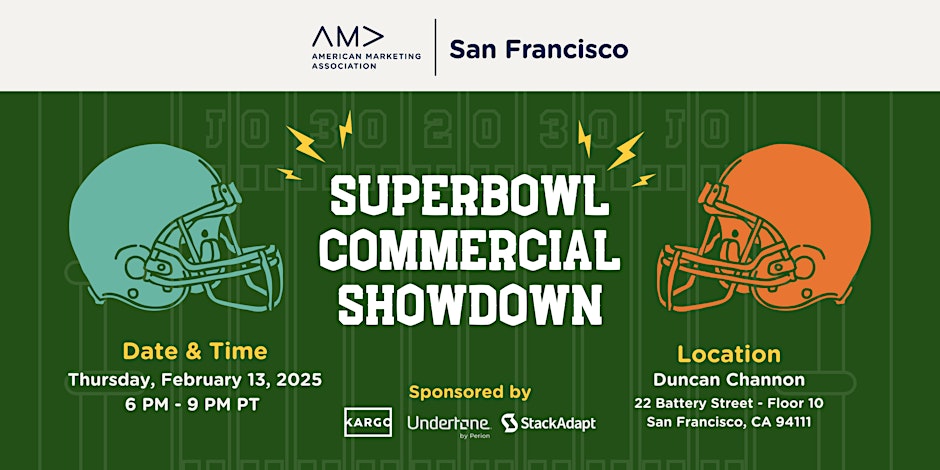Whether you were stoked to see the Birds fly or were hoping for a KC threepeat, last night left marketers with plenty to gossip about—and left a record 22.6M Americans with the “Super Bowl flu” to start the week. 😂
Here’s what stood out to us at H/L this Super Bowl Sunday:
Toyota turns up again in NorCal
First, H/L was proud to debut new work for Toyota of Northern California regionally in the big game. This is the second time in the last three years that we’ve partnered with Toyota of Northern California to produce new work for Super Bowl Sunday. “Turn up” combined three iconic Northern California brands—Toyota, Palisades Tahoe mountain resort, and Olympic gold medalist skier, Jonny Moseley. Congratulations to all involved! Check out our spot here.
Hungry for heartstrings pulls
For the last several years, comedy has ruled the day—at least in terms how most brands try to entertain and stand out. And this year was no exception. The irony is that with so many brands choosing lateral or even bizarre storytelling concepts, most of them are less likely to be remembered after that last bit of guacamole is scooped. In fact, the editors at Ad Age described the Super Bowl Class of ’25 as “a lot of formulaic work.” Ouch.
Interestingly, when you look at the top-two ranked 2025 commercials from Ad Age, they’re stories that veered hard from a comedic tone: Google’s pull at parents’ heartstrings with “Dream Job,” and Nike’s “So Win” that literally rolls its eyes at the double-standards women athletes must face.
Likewise, USA Today’s annual Ad Meter had 173,000 real people (read: everyday consumers, not Ad Age editors) rank every single spot. Instead of comedy, the top-two ranked commercials on the Ad Meter leaned into cuteness, emotion, and stories that had us rooting for the underdog. Specifically, an undersized foal with Budweiser’s “First Delivery” and an undersized farmer with Lay’s “The Little Farmer.”
In a moment of widespread divisiveness as backdrop, crafting stories of positivity or featuring heroes we can universally support makes a lot of sense for brands.
Are celebrity executions always worth it?
As you’re probably aware, 30 seconds of Super Bowl airtime cost an average $8M in 2025—about a $1M increase over last year. And given the propensity of brands to rush to celebrity-driven or cameo storylines (in 2024, eMarketer reported that 74% of Super Bowl ads featured celebrity appearances!), total costs to produce and air a Super Bowl spot are, well, bananas.

Typically, a brand chooses to feature a celebrity to borrow specific traits from them in an effort to transfer those traits to their brand. (Or in the case of Little Caesars, they chose to transfer Eugene Levy’s eyebrows.) It can be a great long-term strategy. There’s a reason Matthew McConaughey is a repeat spokesperson for both Salesforce and Uber Eats.
But with seemingly every execution featuring a cameo or three, we do have to wonder if the short-term association is worth it for most Super Bowl advertisers.
An additional challenge of going the celebrity-driven route, of course, is long-term rights negotiations for brands. For instance, two of last year’s top USA Today Ad Meter performers—Verizon, with Beyonce, and State Farm, with Danny DeVito and Arnold Schwarzenegger—have already been pulled from viewing on YouTube. Presumably these brands only negotiated single-year rights with expensive celebrities.
Compare that to the Farmer’s Dog’s narrative-driven Super Bowl spot, “Forever,” which won the USA Today Ad Meter in 2023. It continues to be live on YouTube with 35M views and counting. And, because of its popularity, Farmer’s Dog has been able to bring it back repeatedly for additional broadcast and OTV media buys.
Where the ladies at?
Speaking of celebrities, we couldn’t help but notice that nearly all celebrity-driven spots featured white male celebrities. This was especially striking given that so many narrative-driven commercials told stories of female empowerment, like Lay’s “The Little Farmer,” The NFL’s “NFL Flag 50,” Dove’s “These Legs.” It also felt like a miss given that the NFL recently hit its highest record of women viewership and its highest favorability among Gen Z and Millennial women, per Morning Consult.

While a few brands stepped up and did lead with women celebrities—like Wanda Sykes, Issa Rae, and Aubrey Plaza—they sure were outnumbered by the Beckhams / Damons / Afflecks / Ramseys / Bradys / Goggins / Fords / Levys / Culkins / Powells / Diesels / Gillis’ / Offermans / Brodys / McConaugheys / Post Malones of the world, to name a few. Indeed, Ad Age also noted that “Super Bowl LIX advertisers appear to be dialing back efforts around diversity and inclusion,” presumably to avoid drawing the national attention of DEI opponents.
If there was one very notable exception to this rule—and it’s one of our favorites from last night—it was Nike’s athlete-driven “So Win.” At H/L, we discussed the rocky missteps for the Nike brand last year in our recently published 2025 Key Consumer Trends report. In 2024, Nike allowed competitors like Hoka to gain share, while also weirdly delaying styles promoted by US Summer Olympians from reaching store shelves when they would best sell.
As part of a “comeback” strategy, Nike bought Super Bowl airtime for the first time since 1998 and—unlike most advertisers—opted not to release the commercial early online. The result seemed to build more anticipation. Indeed, at the Super Bowl party my wife and I attended, it seemed to be the only spot that drew quiet and attention from everyone in the room. Brandwatch Consumer Research reported that Nike was the most-talked about advertiser in real-time, earning a quick 13,000 mentions and high-praise across various online platforms.
More humanity, less robot-y
With so much recent talk about generative AI and what it will ultimately mean for the ad industry, it really stood out that (to the best of our knowledge) no brands elected to create commercials entirely with AI. Indeed, Adweek reported that even OpenAI’s animated Super Bowl debut, “The Intelligence Age,” was animated by human Creatives using a mix of 2D hand animation and 3D procedural rendering.
![]()
This is noteworthy because 2023 saw the release of two AI-created brand spots for Toys R Us and Coca-Cola—and both were largely lambasted. It looks like Super Bowl advertisers got the memo.
In our 2025 Key Consumer Trends report, we noted growing consumer skepticism around how AI is being used. When we dug deeper, we learned that it’s not so much that consumers are anti-AI, but rather that they’re concerned about their own data and growing increasingly frustrated by being forced to use AI tools when they want to interact with a person. It makes sense then that many of the Super Bowl spots for technology-led brands were careful to bring a softer human (or animal) touch into the equation—like the dad navigating parenthood and job interviewing in Google’s “Dream Job.” Or NerdWallet’s “Genius Beluga” that featured the charming delivery of Kieran Culkin.
Let’s chat more about Super Bowl spots with AMA SF

If you happen to be in the Bay Area this week, the American Marketing Association (AMA) San Francisco is hosting a panel discussion on the creative and media strategies behind this year’s Super Bowl advertising. I’m honored to be participating on the panel along with professionals from Fox, Goodby Silverstein & Partners, and Duncan Channon. The event is this Thursday night, February 13, and tickets are available here.
What were your favorites from this year’s Super Bowl? We’d love to hear from you.
Thank you,
David Morrissey
VP, Director of Brand Strategy at H/L
